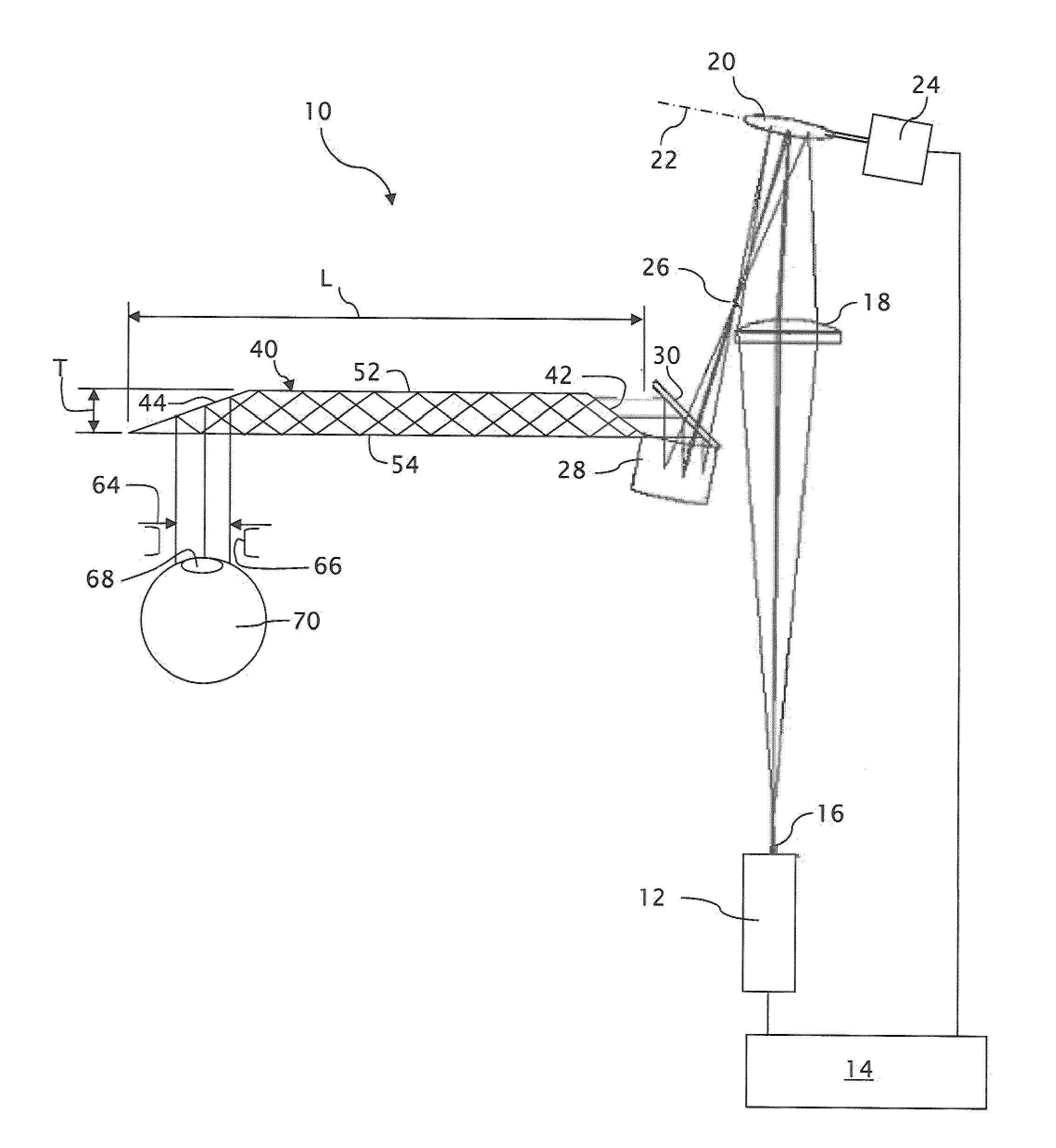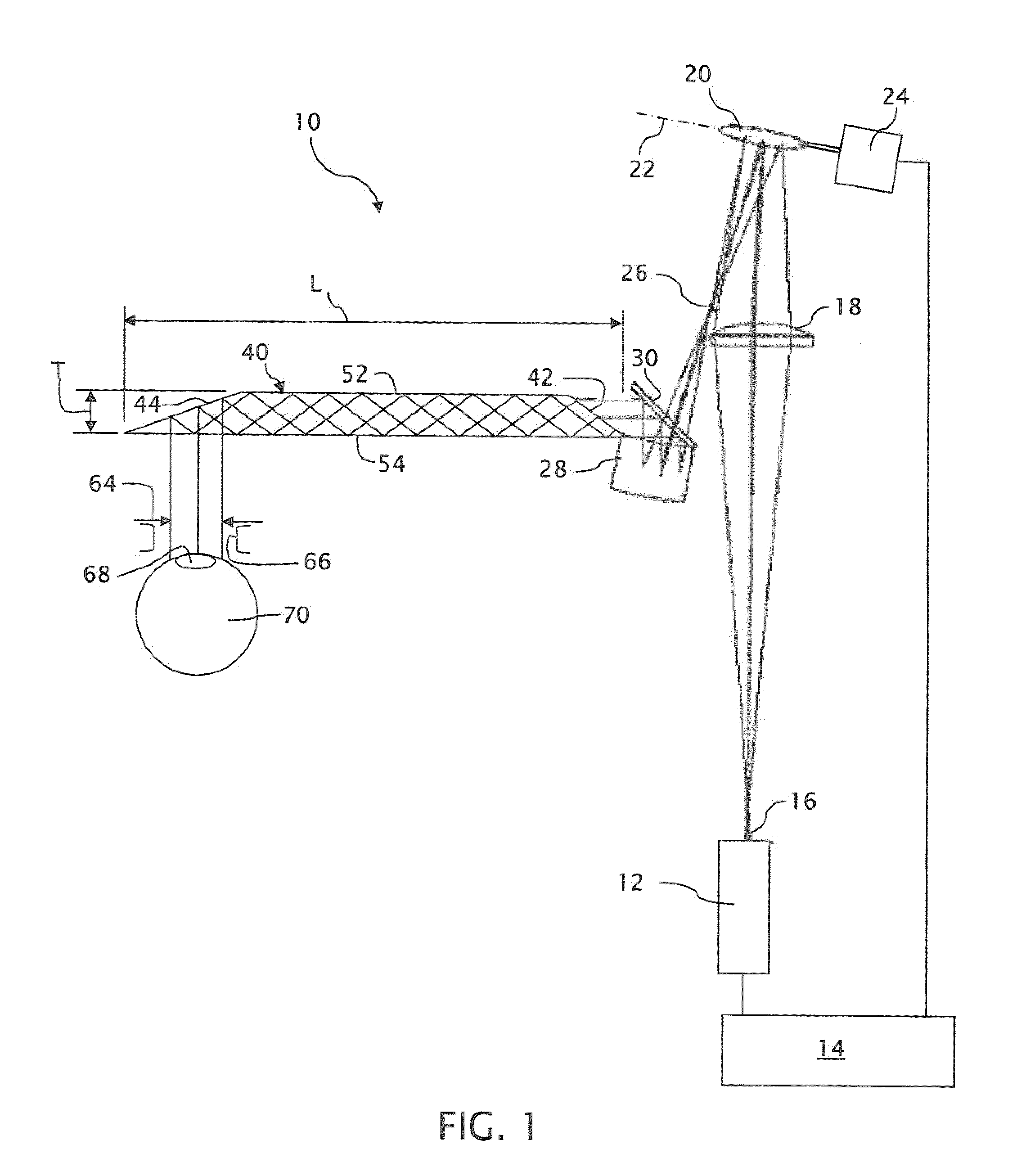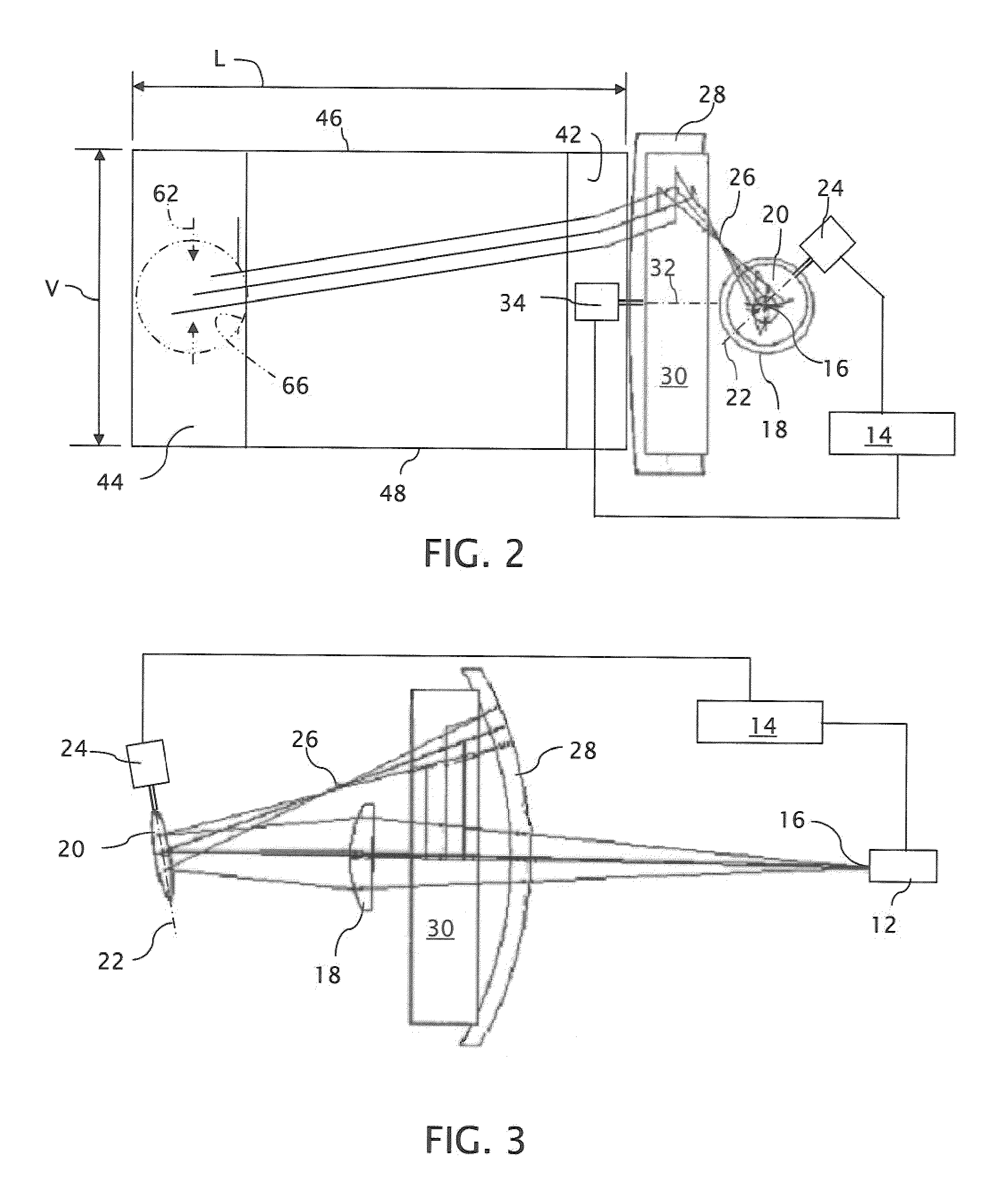Compact near eye display with scanned image generation
a near eye display and scanned image technology, applied in the field of near eye displays, can solve problems such as image degradation, and achieve the effect of limiting the overall size of the optics and minimizing the thickness of the display
- Summary
- Abstract
- Description
- Claims
- Application Information
AI Technical Summary
Benefits of technology
Problems solved by technology
Method used
Image
Examples
Embodiment Construction
[0021]A compact near eye display system 10 in accordance with the invention is shown in FIGS. 1-3 in a form that generates virtual images using a two-dimensional scanning system. A light source 12, which is preferably modulatable in both intensity and color, receives a video signal from a controller 14 for generating raster images. For producing color raster images, the light source 12 can be formed by a conventional white light source in combination with color filters or by a combination of different monochromatic light sources such as different color light emitting diodes (LEDs). Monochromatic raster images can be produced by a monochromatic light source modulatable in intensity alone.
[0022]The light source 12 preferably forms a point source 16 for generating a single point within the intended virtual image. An imaging optic 18, preferably in the form of a refractive lens, relays an image of the point source 16 to a focal surface 26 of a focusing optic 28, which preferably takes t...
PUM
 Login to View More
Login to View More Abstract
Description
Claims
Application Information
 Login to View More
Login to View More - R&D
- Intellectual Property
- Life Sciences
- Materials
- Tech Scout
- Unparalleled Data Quality
- Higher Quality Content
- 60% Fewer Hallucinations
Browse by: Latest US Patents, China's latest patents, Technical Efficacy Thesaurus, Application Domain, Technology Topic, Popular Technical Reports.
© 2025 PatSnap. All rights reserved.Legal|Privacy policy|Modern Slavery Act Transparency Statement|Sitemap|About US| Contact US: help@patsnap.com



